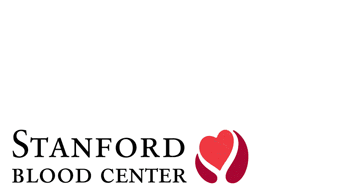Archives
March 12, 2012 at 1:44 pm
Published by Stanford Blood Center
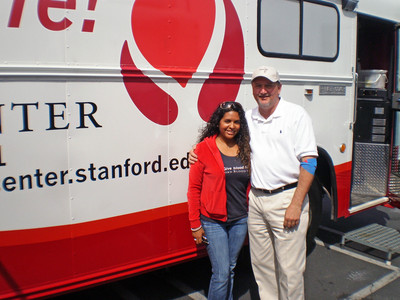
By Tim Gilmore, Blood Drive Account Manager, Stanford Blood Center
When you think of Paul Newman, you probably think of the Hollywood legend. But when you say "Paul Newman" at Stanford Blood Center, people think of the Paul B. Newman Neighborhood Blood Drive. Paul is an extremely passionate and dedicated Blood Drive Coordinator. Rain or shine, Paul is out greeting donors and making everyone feel welcome.
March 8, 2012 at 11:31 am
Published by Stanford Blood Center
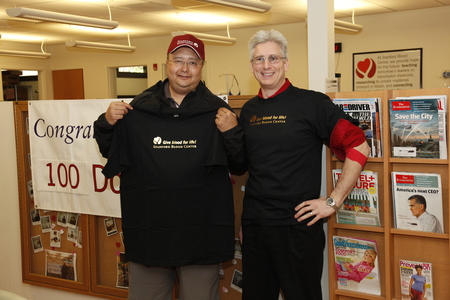
Friends Roy Tuason and Erik Klein gave their 100th donations together on Tuesday, 3/6 at our Mountain View center. Their wives, friends and co-workers joined them on this special day with many of them donating as well.
Here, Roy shares a little about himself and his buddy, Erik, and how they got started donating blood.
February 29, 2012 at 10:44 am
Published by Stanford Blood Center
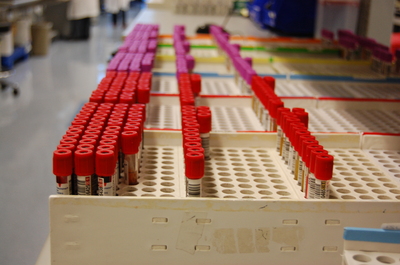
By Tim Gilmore, Blood Drive Account Manager, Stanford Blood Center
During each blood donation, six small tubes of blood are collected (to be used later for testing), along with the bag of blood used for transfusion. When the blood donors finish their good deed, they rest in the canteen with cookies and juice. But their precious gift of blood is already busy, working toward saving lives! Here, we take you on a tour through our lab.
February 24, 2012 at 9:58 am
Published by Stanford Blood Center
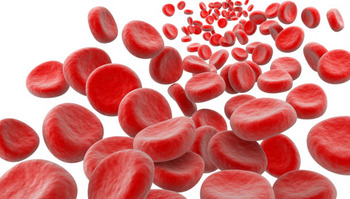
By Billie Rubin, Hemoglobin's Catabolic Cousin, reporting from the labs of Stanford Blood Center
Usually living cells have a nucleus where the chromosomes and DNA live, and a number of other organelles that are involved in making energy, proteins, repairs to itself, etc. But our little red blood cell (RBC) friends selflessly throw all of that away when they grow up to have more room for lots of hemoglobin molecules that bind to oxygen, then take all that oxygen to other tissues of the body. This selfless act leaves our RBCs with a diminished life span (just 120 days) because they can't repair themselves.
February 21, 2012 at 10:49 am
Published by Stanford Blood Center
By Donors & Friends of SBC
Last year for Valentine's Day, we asked you to write haiku poems for those closest to your heart. The response was better than anticipated so we asked for your poems again this year, this time to be written about donating blood and the patients who are fortunate to receive it. In addition to sharing them below, we've turned your three-line works of "heart" into cards, to be delivered to patients at the Palo Alto VA Hospital later this week.
February 17, 2012 at 1:35 pm
Published by Stanford Blood Center
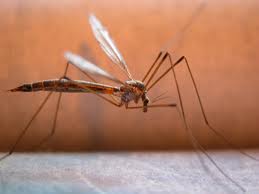
By Billie Rubin, Hemoglobin's Catabolic Cousin, reporting from the labs of Stanford Blood Center
According to the Centers for Disease Control and Prevention (CDC), "About 1,500 cases of malaria are diagnosed in the United States each year. The vast majority of cases in the United States are in travelers and immigrants returning from countries where malaria transmission occurs, many from sub-Saharan Africa and South Asia."
February 14, 2012 at 10:37 am
Published by Stanford Blood Center
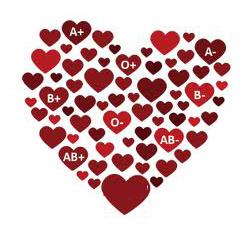
By Julie Ruel, Social Media Manager, Stanford Blood Center
Do you consider blood type an important criterion for compatibility with the potential special someone in your life? According to Jenny Nakao Hones, a Japanese American who studies Asian cultures, superstitions, and customs, "One of the most popular methods in Japan that is gaining popularity around Asia is blood type analysis. Similar to other horoscope systems, blood type
has charts that indicate compatibility."
February 7, 2012 at 3:23 pm
Published by Stanford Blood Center
By Julie Ruel, Social Media Manager, Stanford Blood Center
As a blood donor, you are a giving individual by design. We're certain you would donate without recognition and regardless of the day's giveaway. That said, it's important to our organization that we don't take the people behind the blood donations for granted. You are part of a very important, very small population and your loyalty to patients in the community deserves to be recognized.
February 3, 2012 at 9:20 am
Published by Stanford Blood Center
By Billie Rubin, Hemoglobin's Catabolic Cousin, reporting from the labs of Stanford Blood Center
Ill-conceived blood transfusions go back to the 1600's (disastrous transfusions of lamb's blood into humans), and the discovery of the ABO system goes back to the early 1900s. But just how old is blood itself? A picture from the Smithsonian in 2009 showed a red blood cell (RBC) in the soft tissue of a Tyrannosaurus Rex bone from 68 million years ago.

January 26, 2012 at 9:29 am
Published by Stanford Blood Center
I am an active 43 year old woman with a strong love for life. I am living with terminal breast cancer and acute leukemia (AML). As a result, I am transfusion dependent and now receive blood and platelets on a weekly basis.

